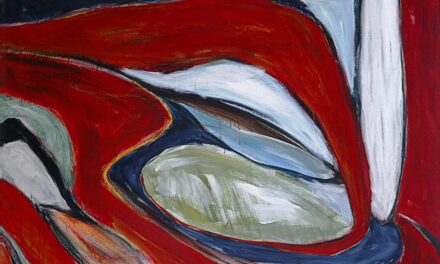John Constable, one of the most renowned British landscape painters, was born on 11 June 1776 in East Bergholt, Suffolk, England. He was the second of six children born to Golding and Ann Constable. His father was a prosperous corn merchant, and the family resided in a comfortable home with expansive grounds.
Constable’s affinity for nature and rural landscapes can be attributed to his formative years spent in the picturesque environs of East Bergholt. Constable attended a local grammar school, where he exhibited an early aptitude for drawing. His parents recognised his artistic talent and supported his pursuit of an artistic career.
In 1795, at the age of 19, Constable matriculated at the Royal Academy Schools in London, where he studied under the tutelage of the esteemed landscape painter John Thomas Smith. During his tenure at the Royal Academy, Constable was exposed to the works of the Old Masters, particularly the landscapes of Claude Lorrain and Jacob van Ruisdael, which significantly influenced his artistic development. Constable’s early years in London were instrumental in shaping his career, as he immersed himself in the city’s vibrant art scene and refined his painting techniques.
Summary
- John Constable was born in Suffolk, England in 1776 and received his education at Dedham Grammar School and the Royal Academy in London.
- Constable was heavily influenced by the landscapes of his childhood, particularly the countryside of Suffolk and the River Stour, and was inspired by the works of landscape painters such as Thomas Gainsborough and Claude Lorrain.
- Constable’s style was characterised by his use of light and colour to capture the natural beauty of the English countryside, and he often painted en plein air to accurately depict the changing light and weather.
- “The Hay Wain” is one of Constable’s most famous works, depicting a rural scene with a horse-drawn cart crossing a river, and he is also known for other notable works such as “Flatford Mill” and “The Leaping Horse”.
- Constable’s work was not widely recognised during his lifetime, but he has since become one of the most celebrated landscape painters in British art history, influencing generations of artists with his dedication to capturing the beauty of nature.
- In his personal life, Constable married Maria Bicknell and had seven children, and his relationships with his family and friends often influenced his work and artistic choices.
- Constable’s impact on the art world can be seen in the development of the Romantic and Impressionist movements, as well as his influence on later landscape painters such as J.M.W. Turner and the Barbizon School.
Influences and Inspirations
The English Countryside: A Lifelong Inspiration
His deep connection to the English countryside, particularly the landscapes of Suffolk and Dedham Vale, played a central role in his artistic development. The rural scenery of his childhood home provided him with an endless source of inspiration, and he often returned to these familiar landscapes throughout his career.
Influence of the Old Masters
In addition to his love for nature, Constable was also influenced by the works of 17th-century Dutch landscape painters, such as Ruisdael and Hobbema. He admired their ability to capture the atmospheric effects and changing moods of the natural world, and sought to emulate their techniques in his own work. Another significant influence on Constable was the work of the French landscape painter Claude Lorrain, whose idealised landscapes and use of light and colour had a lasting impact on his artistic style.
A Unique Approach to Landscape Painting
Constable’s dedication to capturing the essence of the English countryside, combined with his study of the old masters, resulted in a unique and innovative approach to landscape painting that set him apart from his contemporaries.
The Constable Style

Constable’s distinctive style is characterised by his bold use of colour, expressive brushwork, and keen observation of nature. He was a master at capturing the transient effects of light and atmosphere, and his paintings are renowned for their sense of immediacy and vitality. Constable’s approach to landscape painting was revolutionary for its time, as he eschewed the traditional conventions of classical landscape painting in favour of a more naturalistic and spontaneous style.
One of Constable’s most significant contributions to the art world was his use of en plein air painting, or painting outdoors directly from nature. This allowed him to capture the ever-changing effects of light and weather on the landscape, resulting in a sense of authenticity and dynamism in his work. His dedication to capturing the fleeting moments of nature set him apart from his contemporaries and established him as a pioneer of the plein air tradition.
Constable’s commitment to truthfully representing the natural world, combined with his innovative techniques and expressive brushwork, cemented his reputation as one of the greatest landscape painters in art history.
The Hay Wain and Other Famous Works
One of Constable’s most famous works is “The Hay Wain,” painted in 1821. This iconic painting depicts a rural scene in Suffolk, with a horse-drawn cart crossing a shallow river surrounded by lush greenery. “The Hay Wain” is celebrated for its evocative portrayal of the English countryside and its masterful use of light and colour.
The painting is a prime example of Constable’s ability to capture the beauty and tranquillity of rural life, and it remains one of his most enduring and beloved works. Another notable painting by Constable is “Dedham Vale,” completed in 1802. This early masterpiece showcases his deep affection for the landscapes of his childhood home, with its rolling hills, meandering river, and picturesque cottages.
“Dedham Vale” exemplifies Constable’s ability to convey a sense of timelessness and serenity in his landscapes, and it foreshadows the themes and motifs that would define his later work. Throughout his career, Constable produced a vast body of work that celebrated the natural beauty of England, from tranquil riverscapes to dramatic cloud formations. His paintings continue to captivate audiences with their timeless appeal and enduring relevance.
Recognition and Legacy
Despite facing initial resistance from the art establishment, Constable eventually gained recognition for his innovative approach to landscape painting. In 1829, he was elected as an Associate of the Royal Academy, and he became a full member in 1831. This prestigious honour solidified his status as a leading figure in British art and provided him with greater opportunities to exhibit his work.
Constable’s legacy extends far beyond his own lifetime, as his influence on subsequent generations of artists has been profound. His dedication to capturing the essence of nature and his pioneering use of en plein air painting laid the groundwork for the Impressionist movement that would emerge later in the 19th century. Artists such as Claude Monet and Camille Pissarro admired Constable’s ability to convey the fleeting effects of light and atmosphere, and they drew inspiration from his bold use of colour and expressive brushwork.
Constable’s impact on the development of modern landscape painting cannot be overstated, as he paved the way for new approaches to capturing the beauty and vitality of the natural world.
Personal Life and Relationships

Marriage and Family
In 1816, he married Maria Bicknell, with whom he had seven children. Their marriage was fraught with financial difficulties and health problems, including Maria’s declining health and eventual death in 1828.
Overcoming Adversity
The loss of his beloved wife had a profound impact on Constable, and he struggled with grief and depression in the years that followed. Despite these personal challenges, Constable found solace in his work and continued to produce some of his most iconic paintings during this period.
Friendships and Legacy
He also formed close friendships with fellow artists such as J.M.W. Turner and David Wilkie, who provided him with support and camaraderie during difficult times. Constable’s resilience in the face of adversity is a testament to his unwavering dedication to his art and his enduring passion for capturing the beauty of the natural world.
Impact on the Art World
Constable’s impact on the art world extends beyond his innovative techniques and groundbreaking approach to landscape painting. His dedication to truthfully representing nature and his ability to convey the emotional resonance of the English countryside have left an indelible mark on the history of art. His influence can be seen in the work of countless artists who have been inspired by his bold use of colour, expressive brushwork, and keen observation of nature.
In addition to shaping the course of landscape painting, Constable’s legacy has also had a lasting impact on popular culture. His paintings have been reproduced on everything from calendars to tea towels, becoming iconic symbols of English heritage and rural idyll. The enduring appeal of Constable’s work speaks to its universal resonance and timeless beauty, as it continues to captivate audiences around the world.
In conclusion, John Constable’s contributions to the art world are immeasurable, as he revolutionised landscape painting with his innovative techniques and profound connection to nature. His enduring legacy as one of Britain’s greatest painters is a testament to his unwavering dedication to capturing the beauty and vitality of the natural world. Constable’s influence continues to be felt today, as artists and art lovers alike are inspired by his timeless vision of the English countryside.
If you are interested in learning more about the art movements that followed John Constable’s work, you should check out the article on post-impressionism. This movement, which emerged in the late 19th century, was a reaction against the naturalism of artists like Constable and sought to explore the emotional and psychological aspects of art. You can read more about post-impressionism here.
FAQs
Who is John Constable?
John Constable was an English landscape painter born in 1776. He is known for his romantic and naturalistic paintings of the English countryside, particularly the area surrounding his home in Suffolk.
What is John Constable famous for?
John Constable is famous for his landscape paintings, particularly his depictions of the English countryside. He is known for his use of light and atmospheric effects to capture the beauty of nature.
What are some of John Constable’s most famous works?
Some of John Constable’s most famous works include “The Hay Wain,” “Flatford Mill,” “Dedham Vale,” and “The Leaping Horse.”
What was John Constable’s painting style?
John Constable’s painting style is characterized by his use of loose brushwork and attention to detail in capturing the natural world. He was a key figure in the Romantic movement and sought to convey the emotional and spiritual power of nature in his paintings.
What influence did John Constable have on the art world?
John Constable’s work had a significant influence on the development of landscape painting and the portrayal of nature in art. His dedication to capturing the beauty of the English countryside has inspired generations of artists.




